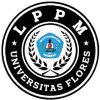Model Pembelajaran Kooperatif Tipe Numbered Head Together dalam Pembelajaran IPA di SDK St. Maria Imaculata Ende 8 Kabupaten Ende
DOI:
https://doi.org/10.37478/jpm.v1i1.344Abstract
All teachers expect that any teaching and learning process achieve adequate results to its learners. To achieve such an adequate result, it is lucid that the role of the teachers is urgent and essential. Teachers are required to possess initiatives and creativities in exploring various models, strategies, and methods of teaching and learning. Another characteristic required from a teacher is the ability to read, comprehend, analyze, and apply appropriate models, strategies, and methods in every instructional activity. The present research study aims to explore one cooperative learning model named Numbered Head Together (NHT). This learning model is offered as an alternative learning model and expected to create comfortable instructional environment in order to assure maximum learning achievement for the students. The Numbered Head Together explored in this research study was conducted in four phases namely numbering, raising questions, thinking together, and answering the questions. The application of such a model of NHT, as indicated, could increase the learning achievement of the students investigated in this study. In pre-cycle stage the percentage of the students complete the topic was only 13%, meaning that the other 87% was not complete. When such a model was applied, however, the significant increase was shown by the students. In Cycle 1 the average of the students complete the topic was 60.9%, indicating that only 39.1% was not complete. In Cycle 2, the average of the complete students reached 91.3% and only 8.7% of the students were not complete. By the last cycle of the application of NHT model, the average peaked at 100%, indicating that all of the students were complete to finish the topic of the lesson. Based on the findings of the study, it is concluded that the application of Numbered Head Together (NHT) cooperative learning model is advantageous in increasing the learning achievement of the four graders at St. Maria Imaculata Catholic Primary School of Ende 8.
Downloads
Keywords:
Numbered Head Together, Learning Achievement, Model, Teacher, StudentsReferences
Echol M dan Hassan Shadily, 2006. Kamus Inggris Indonesia. Jakarta: PT. Gramedia.
Ekawarna, 2013. Penelitian Tindakan Kelas. Jakarta: GP Press Group.
Huda, Miftahul, 2011. Cooperative Learning Metode, Teknik, Struktur dan Model Penerapan. Yogyakarta: Pustaka Pelajar.
Ibrahim, H, M, 2000. Pembelajaran Kooperatif. Surabaya: Unesa.
Isjoni, 2011. Pembelajaran Kooperatif Meningkatkan Kecerdasan Komunikasi Antar Peserta Didik. Yogyakarta: Pustaka Pelajar.
Koenjaraningrat, 1983. Metode Penelitian Masyarakat. Jakarta: Gramedia.
Koten, Natsir, 2011. Supervisi Pendidikan dan Pengajaran. Ende: Nusa Indah.
Mulyasa, 2009. Standar Kompetensi dan Sertifikasi Guru.Bandung: PT. Remaja Rosdakarya.
Sanjaya, Wina, 2006. Strategi Pembelajaran Beroientasi Standar Proses Pendidikan. Jakarta: Kencana Prenada Media Group.
Sudjana, Nana, 2009. Penilaian Hasil Proses Belajar Mengajar. Bandung: PT. Remaja Rosdakarya.
Sukmadinata, 2005. Metode Penelitian Pendidikan. Bandung: PT. Remaja Rosdakarya.
Supriyono, Agus, 2009. Cooperative Learning.Yogyakarta: Pustaka Pelajar.
Tim Penyusun, 1996. Kamus Besar Bahasa Indonesia. Jakarta: Gramedia.
Trianto, 2009. Mendesain Model Pembelajaran Inovatif Progresif. Jakarta: Kencana Prenada Media Group.
Wena, Made, 2011. Strategi Pembelajaran Inovatif Kontemporer. Jakarta: Bumi Aksara.
Downloads
Published
How to Cite
Issue
Section
License
Copyright (c) 2020 Aurelius Fredimento, Nining Sariyyah

This work is licensed under a Creative Commons Attribution-ShareAlike 4.0 International License.













